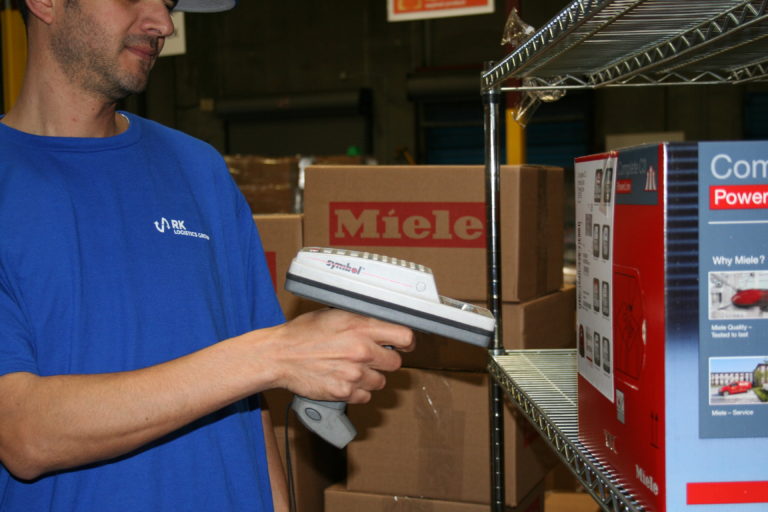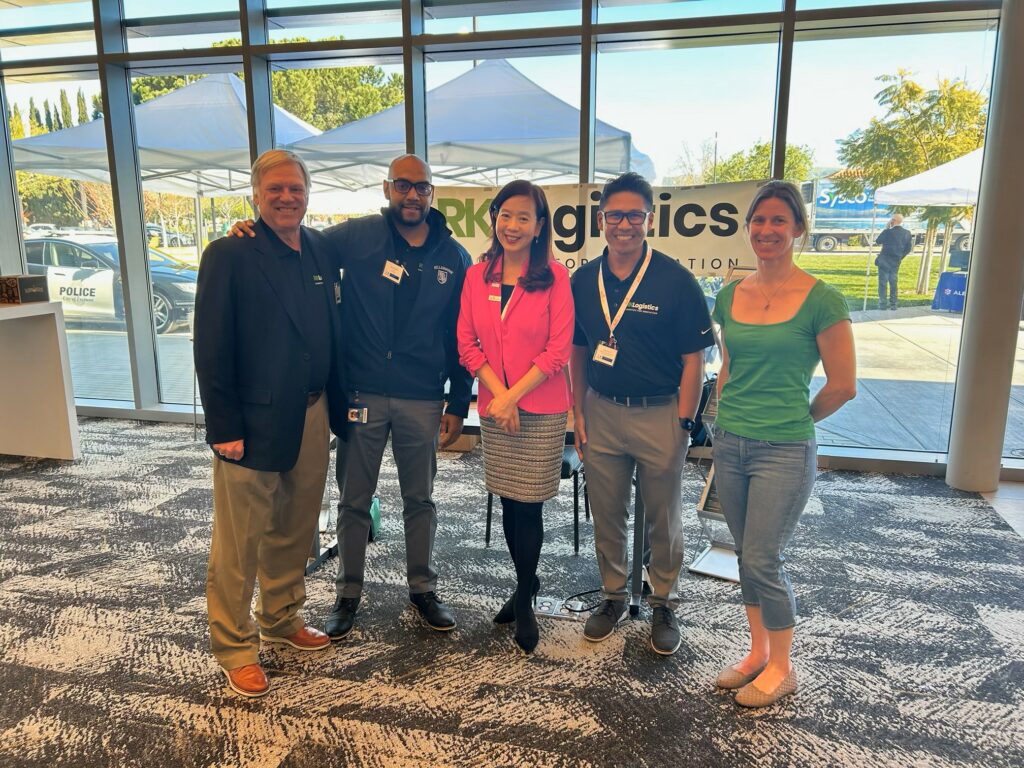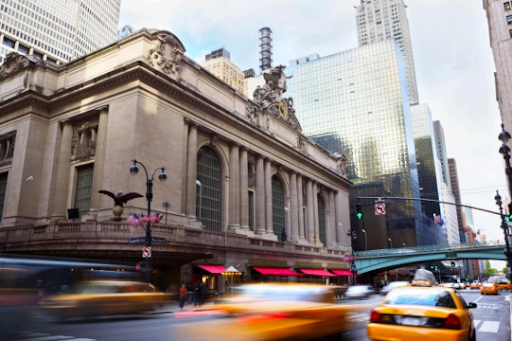RK’s solution drives superior service at lowest delivered cost
By John Schulz, Contributing Editor, Logistics Management
May 7, 2018
Logistics is more than getting freight in the right places at the right time. It is becoming a strategic corporate weapon to achieve market share advantages. That’s what one high-end appliance maker is proving.
Germany-based Miele is the largest family-owned luxury appliance manufacturer in the world, and has a passionate consumer following, whether it’s $1,000 vacuums or $10,000 freezers. The company has established a strong market reputation as a popular, high-end brand with superbly engineered products that meet the exacting needs of well-heeled customers.
With worldwide sales of $5 billion, Miele aims to manufacture the highest-quality domestic appliances and commercial equipment in the world. And it is using a world class logistics network to help boost sales around the globe.
Miele executives say consumers buy their products because of unsurpassed quality and performance. Yet with every sale, the quality of the brand and the customer’s perception of the product is directly influenced by the experience the customer has in not only researching and buying the product, but receiving it and even opening the box for the first time.
That’s where precision and excellence in logistics plays a defining role in this age of Amazon when the customer is not always right, he or she wants it today, no questions asked.
“Our goals are straightforward,” says Matthew Hutcherson, Miele’s director of operations, North America, Princeton, N.J. “We have to meet the ‘Amazon standard’ for product availability, we must ‘delight’ our customers who are by rights, very demanding. Our product must reach the customer on time and in perfect condition. We have to be precise. There is no margin for error.
Most of Miele’s products are sold through large retailers like Costco, Bed Bath and Beyond, Williams Sonoma, and Amazon, as well as through Miele’s dealer network and specialty appliance stores. Some sales occur via Miele’s ecommerce site direct-to-consumer.
“The term Amazon effect gets thrown around, and it is a key customer of ours,” Hutcherson said. “The effect is impacting competitors of Amazon so they are forced to drive their supply chains so they can provide the same kind of online information that Amazon can provide. The other effect is selling direct to customers. Our site has to be as agile as Amazon’s because that is the standard.”
In each instance, the design and operation of Miele’s supply chain network, strategic placement of product warehouses, the logistics partners the company engages to manage inventory and fulfilling orders all influence the success of precise logistics.
“We constantly look for ways to wring out costs and increase velocity in our supply chain,” says Hutcherson. “More and more retailers are substituting information for inventory. Fulfillment cycles are tighter and more stringent as our customers are carrying less product.”
It’s a strategic balancing act, Hutcherson says. The less inventory a retailer carries the lower the cost, but if inventory is too thin, the retailer risks lost sales by not having the right product in the right place when the customer is ready to buy.
“We have to continually refine our supply chain and logistics operations, in concert with the customer, to win this balancing act every day,” notes Hutcherson. The retailer expects perfect product availability and precise order execution. They want to carry minimal inventory, “The longer they can postpone acquiring inventory, the better it is for them financially. So that’s what our supply chain is designed to support.”
Miele’s core competency is investing capital–financial and human–in the design, manufacture and marketing of top-quality, high-end luxury appliance products, explains Hutcherson. It’s not running warehouses.
“We believe we can build a more cost-effective product and a consistent customer experience through key partnerships with strategic logistics providers,” Hutcherson said. One of those is Fremont, Calif.-based RK Logistics Group, which like Miele, is family-owned.
RK Logistics handles warehousing, inventory management and order fulfillment for Miele’s floor care business line. RK supports the Miele brand with precise logistics operations serving the western United States, from the Dakotas down to Texas and west to the Pacific.
Hutcherson tells LM that three requirements were necessary for RK Logistics:
- Trust;
- Demonstrated operational capabilities and consistent, day-in-and-day-out performance; and
- Responsive and proactive about communications
“We wanted a logistics business partner that’s confident, aggressive, growing in terms of its own capabilities and systems. And one that has a certain vitality, a ‘can do,’ esprit-de-corps culture among employees and managers,” Hutcherson said. “Be excited about the business. Give us ideas to make us better. We expect our 3PL to challenge us, help us improve continuously through best practices, process expertise and practical experience over time. That’s what we get with RK.”
Outsourcing logistics made sense, Hutcherson said, because of cost and the opportunity to leverage 3PL core competency.
“We analyzed cost to outsource versus cost to operate internally, and outsourcing was clearly a better strategy. There was a higher cost to serve and more time and energy to manage warehousing and distribution internally,” he added.
Miele’s sales and market share are growing at a double-digit clip in the U.S. Managing that growth efficiently while keeping logistics performance at a high level are imperative.
“My charge is to operate at the lowest practical cost to serve. Looking at our supply chain network, and evaluating where our warehousing and logistics operations need to be, is something that I continually do,” says Hutcherson, who uses all the classic key performance indicators in measuring success.
Those include order accuracy and timeliness, fulfillment cycle time, transportation cost, on-time delivery, invoicing accuracy, claims for lost or damaged shipments and overall cost to serve.
“Financially we are expected to operate the supply chain at a lower cost to serve each year,” he said. “So as we grow we have to absorb some of that cost through productivity on both sides, and find ways to improve and streamline processes to continually reduce supply chain expense as a percentage of overall product cost.”
Hutcherson adds that it is particularly relevant for Miele because of the company’s high-end products. Whether it’s a $1,000 vacuum or a $13,000 oven, there is a customer experience that goes along with that,” he said.
“Strategically it’s less about saving cost—although all cost is tracked closely—we have to design a supply chain experience that’s commensurate with the customer experience,” Hutcherson said. “I’ve got to make sure it gets there intact and not damaged. A $10,000 refrigerator that is damaged is problematic.”
Hutcherson said it was vital that every touch point a customer has with Miele reinforces their positive perception of the brand.
“Our supply chain plays a huge role in that,” he added. “When we do it right, Miele, our 3PL, the retailer and the consumer all win.”



